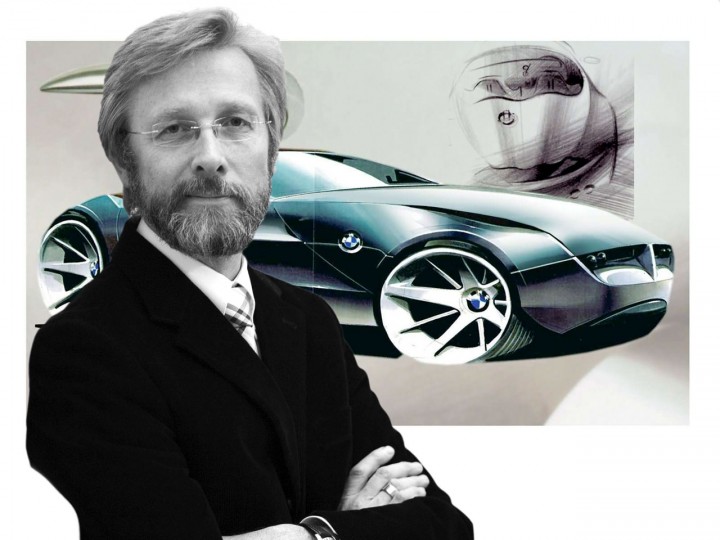
Chris Bangle, full name Christopher Edward Bangle, was born on October 14, 1956, in Ravenna, Ohio, USA, and grew up in Wisconsin. From a young age, he was passionate about drawing and engineering. In 1981, he graduated from the ArtCenter College of Design in Pasadena, California, specializing in transportation design. His first job was at Opel, where he worked from 1981 to 1985 on both interior and exterior design. In 1985, he moved to Fiat, where he contributed to several models, most notably creating the iconic Fiat Coupé, which entered production after his departure. In 1992, he became the first American to hold the position of Head of Design at BMW. There, he introduced the revolutionary “Flame Surfacing” concept—complex, sculpted body surfaces combining sharp edges with smooth curves. Under his leadership, landmark models such as the BMW Z4 E85, 6 Series E63, 7 Series E65, and 5 Series E60 were born, along with striking concept cars like the BMW Gina, Z9 GT, and CS Concept. His style sparked much debate: some saw him as a visionary genius, while others criticized him for radically changing BMW’s traditional design language. In 2009, Bangle left BMW and founded his own design studio
Top 5 production cars from Chris Bangle:
8-th place:BMW x5 E53 (restyle)
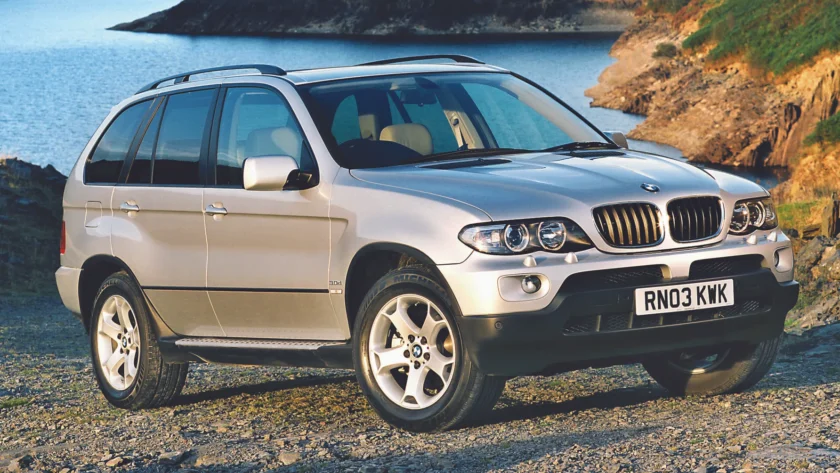
Opens the top of the serial cars that Chris Bangle drew BMW X5 E53 (restyle). Interestingly, Bangle drew the BMW restyled version, and according to some data, it sold better than the pre-restyled version. Since at the time of development of the X5, BMW owned the Range Rover, the car received some common parts with the Range Rover P38, but BMW still focused on sports. In addition to all of the above, the BMW X5 received many innovative technologies at that time.
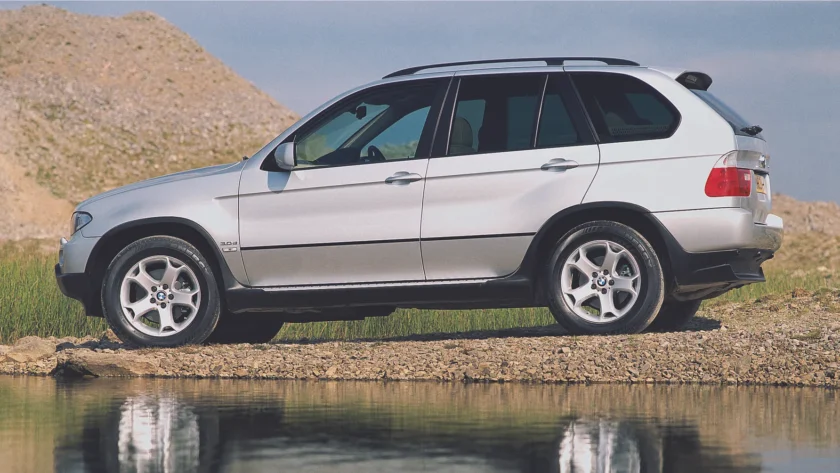
BMW X5 E53 facelift (2003–2006) specifications Type: Mid-size luxury SUV (facelifted first generation) Engine: 3.0i – 3.0L inline-6, 231 hp, 300 Nm 4.4i – 4.4L V8, 320 hp, 440 Nm 4.8is – 4.8L V8, 360 hp, 500 Nm Diesel: 3.0d – 3.0L inline-6 turbodiesel, 218 hp, 500 Nm Transmission: 6-speed manual or 6-speed automatic Full-time all-wheel drive (xDrive) Performance: 0–100 km/h: 3.0i – ~8.1 s 4.4i – ~7.0 s 4.8is – ~6.1 s 3.0d – ~8.8 s Top speed: 3.0i – 210 km/h 4.4i – 240 km/h 4.8is – 246 km/h 3.0d – 210 km/h Dimensions & Weight: Length: 4,666 mm Width: 1,872 mm Height: 1,707 mm Wheelbase: 2,820 mm Curb weight: 2,070–2,335 kg (depending on version) Features: Updated exterior design with new headlights, bumpers, and tail lights Improved xDrive all-wheel-drive system for better traction and handling Optional adaptive xenon headlights Luxury interior with upgraded materials and new infotainment options Available sport package, panoramic sunroof, premium audio system
7-th place: Mini Cooper (2000)
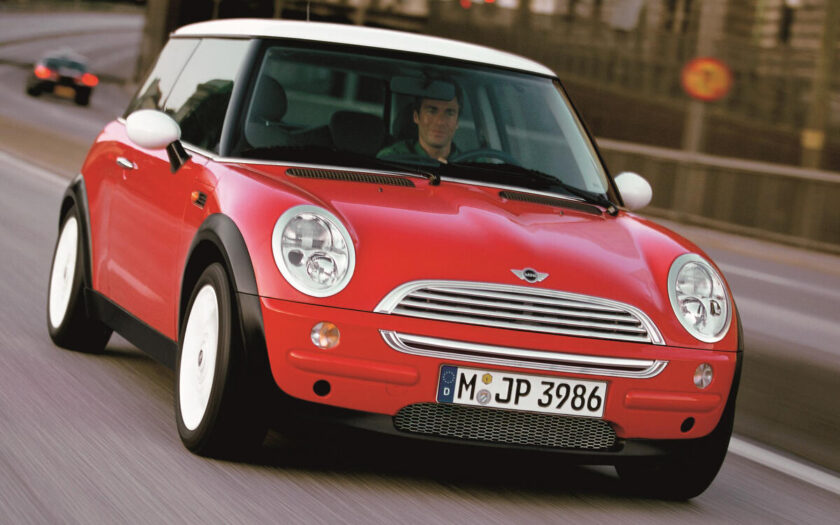
7th place is a redesign of the classic Mini Cooper. Chris Bangle worked in a team on the creation of this car together with Frank Stephenson, who also drew the X5. In general, creating a new MINI was harder to do than to say because it was necessary to preserve the classics but also add modernity. And it justified itself because the following year (2001), the Mini became the car of the year.
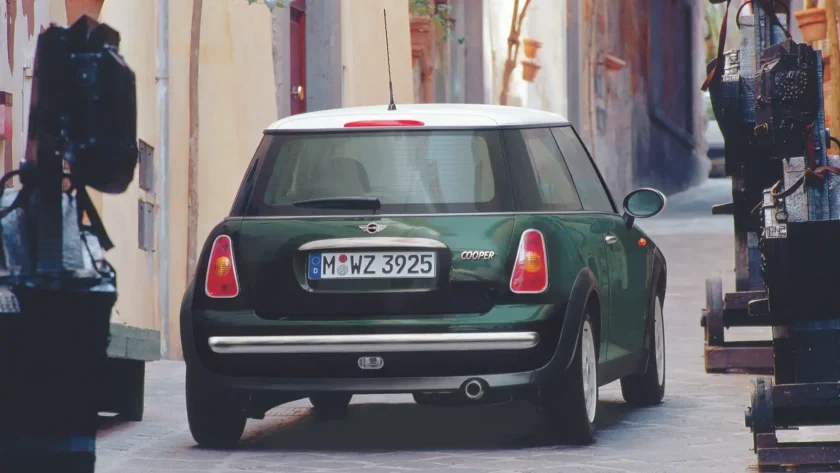
MINI Hatch (2000, 1st generation) specifications Power: MINI One: 85 hp MINI Cooper: 115 hp MINI Cooper S: 163 hp Acceleration 0–100 km/h: MINI One: 11.5 s MINI Cooper: 10.1 s MINI Cooper S: 7.2 s Top speed: MINI One: 175 km/h MINI Cooper: 190 km/h MINI Cooper S: 210 km/h Engine: 4-cylinder petrol, 1.4–1.6 L Cooper S with supercharger Range: ~500–600 km (fuel tank 40–50 L) Dimensions: Length: 3.65 m Width: 1.68 m Height: 1.41 m Wheelbase: 2.46 m Technology: ABS Electric power steering Central locking Air conditioning (optional) Additional features: Sport versions with stiffer suspension Sport seats Unique wheel and bumper designs
6-th place: BMW 5 Series E60
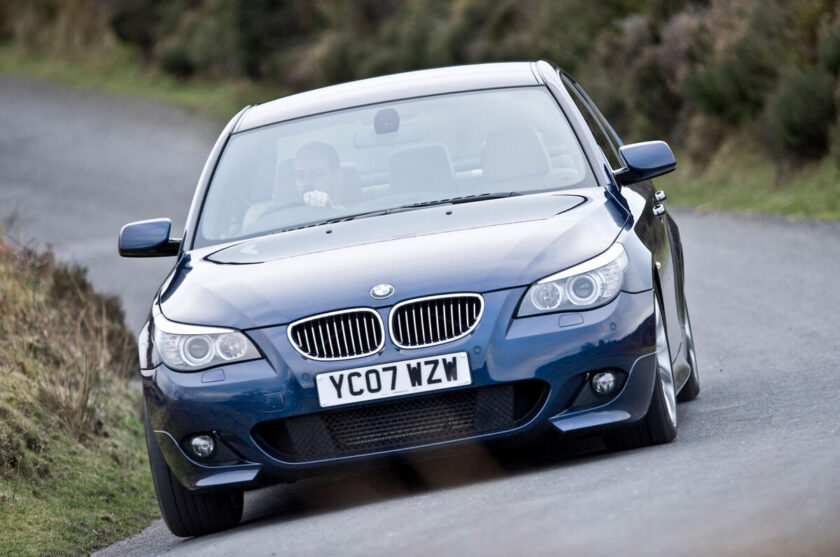
6th place is a rather controversial car in its design, namely the BMW 5 Series E60. At first, true BMW fans did not accept this car because of its non-standardity and headlights. People did not want experiments; they wanted aggressive “classics” of BMW, but years passed, and people fell in love with this design. Interestingly, the M version had a v10, and at the time of its release became almost the most powerful sedan on the market.
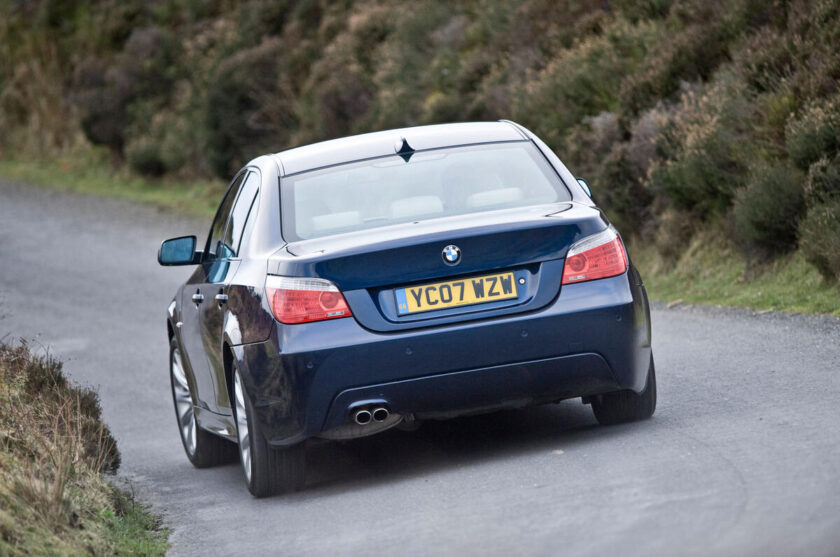
BMW 5 Series E60 (facelift, 2007–2010) Specifications Type: Mid-size luxury sedan (facelifted E60) Engine: 520i: 2.2L inline-6 petrol, 170 hp, 210 Nm 523i: 2.5L inline-6 petrol, 177 hp, 235 Nm 525i: 2.5L inline-6 petrol, 192 hp, 245 Nm 528i: 3.0L inline-6 petrol, 231 hp, 300 Nm 530i: 3.0L inline-6 petrol, 272 hp, 315 Nm 535i: 3.0L inline-6 twin-turbo petrol, 306 hp, 400Nm 540i: 4.0L V8 petrol, 306 hp, 400 Nm550i: 4.8L V8 petrol, 367 hp, 490 Nm M5: 5.0L V10 petrol, 500 hp, 520 Nm 520d: 2.0L inline-4 turbodiesel, 163 hp,340Nm 525d: 2.5L inline-6 turbodiesel, 197 hp, 400 Nm 530d: 3.0L inline-6 turbodiesel, 218 hp, 500 Nm 535d: 3.0L inline-6 twin-turbo diesel, 272 hp, 560 Nm
Transmission: 6-speed manual or 6-speed automatic, optional SMG (M5), rear-wheel drive or full-time all-wheel drive (xDrive) Performance (0–100 km/h): 520i: ~8.3 s 525i: ~7.7 s 530i: ~6.5 s 535i: ~5.7 s 540i: ~5.5 s 550i: ~5.2 s M5: 4.7 s 520d: ~8.8 s 530d: ~6.8 s
Top speed: 520i: 225 km/h 530i: 250 km/h M5: 250 km/h (electronically limited) Diesels: 210–240 km/h
Dimensions & Weight: Length: 4,849 mm Width: 1,851 mm Height: 1,462 mm Wheelbase: 2,885 mm Curb weight: 1,530–1,870 kg
Features Updated exterior with facelifted bumpers, headlights, and taillights iDrive system with upgraded infotainment
5-th place: BMW 3 Series E46
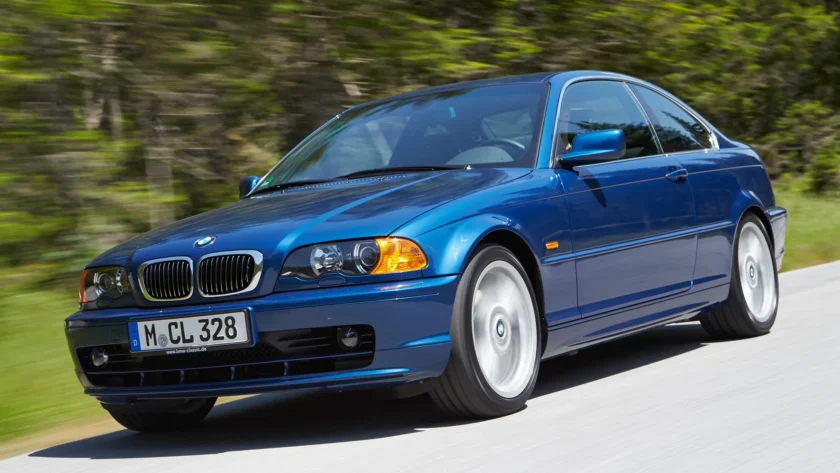
5th place is a kind of classic Bangle; this is a design that was loved at first sight. 3 million cars were sold, so explaining why this car was a cult is pointless. Also, the 3 series actively participated in the GT series racing. The BMW 3 series received a unique innovation in the interior, which became the basis for BMW in the future. This car was featured in the cult game Need for Speed. Thus, Chris Bangle secured the status of a legend for the M3, for which we are very grateful to him.
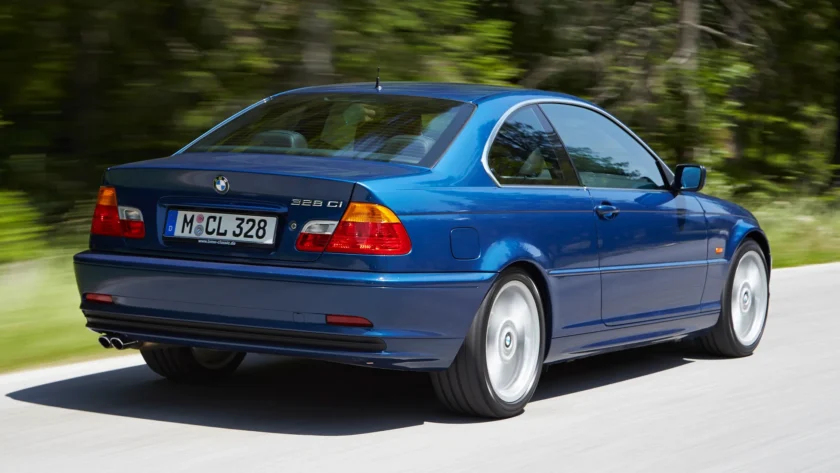
BMW 3 Series E46 Specifications Type: Compact executive car (facelifted E46) Engine: 316i: 1.8L inline-4 petrol, 115 hp, 165 Nm 318i: 2.0L inline-4 petrol, 143 hp, 190 Nm 320i: 2.2L inline-6 petrol, 170 hp, 210 Nm 323i: 2.5L inline-6 petrol, 170–192 hp, 230–245 Nm 325i: 2.5L inline-6 petrol, 192 hp, 245 Nm 328i: 2.8L inline-6 petrol, 193–193 hp, 280 Nm 330i: 3.0L inline-6 petrol, 231 hp, 300 Nm M3: 3.2L inline-6 petrol, 343 hp, 365 Nm 318d: 2.0L inline-4 turbodiesel, 115 hp, 260 Nm 320d: 2.0L inline-6 turbodiesel, 150 hp, 320 Nm 330d: 3.0L inline-6 turbodiesel, 184–204 hp, 390–410 Nm
Transmission: 5- or 6-speed manual, 5- or 6-speed automatic; rear-wheel drive or optional all-wheel drive (xi models) Performance (0–100 km/h): 316i: ~10.5 s 318i: ~9.2 s 320i: ~7.8 s 325i: ~7.2 s 330i: ~6.5 s M3: 5.1 s 318d: ~11.5 s 320d: ~9.0 s 330d: ~7.2 s
Top speed: 316i: 200 km/h 320i: 235 km/h 330i: 250 km/h M3: 250 km/h (electronically limited) Diesels: 190–230 km/h
Dimensions & Weight: Length: 4,502 mm Width: 1,726 mm Height: 1,385 mm Wheelbase: 2,725 mm Curb weight: 1,320–1,540 kg
Features: Facelifted exterior with new bumpers, headlights, and taillights iDrive system available on higher trims Optional sport package and M Sport suspension Luxury interior with upgraded materials Advanced safety features including airbags, ABS, DSC
4-Th place: Xiaomi SU7
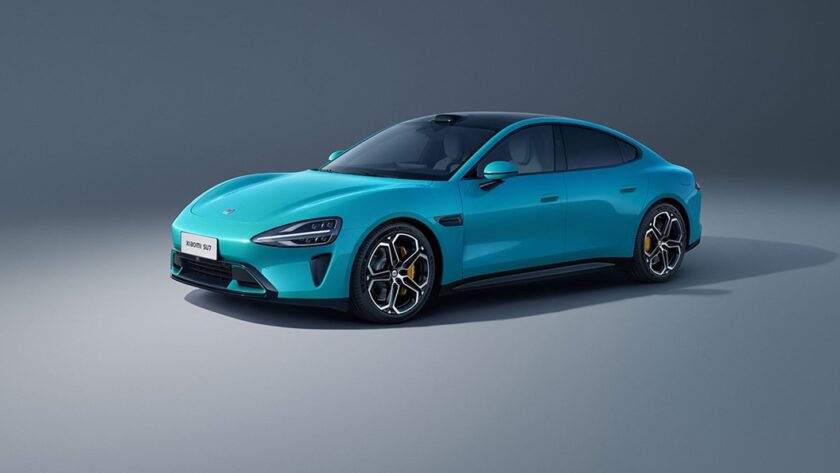
You will be surprised, but this is how the Xiaomi Su7 was designed by Chris Bangle. Although it is necessary to add context here, since the main designer was still Li Tianyuan, and Chris Bangle was a well-known designer, his work cannot be underestimated. The result is a car that combines all the most different features of car design. Interestingly, Lee also worked at BMW and even created a concept design that later went into production as the BMW IX.
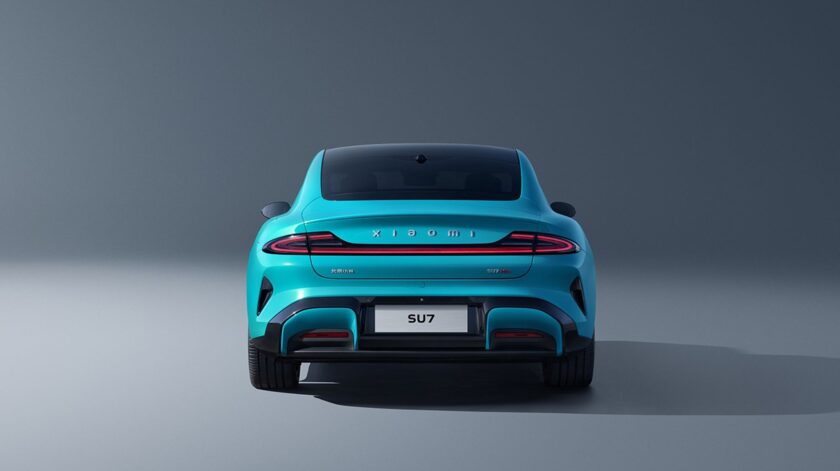
Xiaomi SU7 specifications Power: SU7 Max: 495 kW (664 hp) SU7 Ultra: 1139 kW (1540 hp) 0–100 km/h Acceleration: SU7 Max: 2.8 s SU7 Ultra: 1.98 s Top Speed: SU7 Max: 250 km/h SU7 Ultra: 270 km/h Engine: Electric motor (rear-wheel or all-wheel drive) Variants: HyperEngine V6, V6s, V8s Range: SU7 Max: 800 km (CLTC) SU7 Ultra: 620 km (CLTC) Dimensions: L/W/H: 4997 × 1963 × 1440 mm Wheelbase: 3000 mm Weight: 1980–2250 kg Technology: Xiaomi HAD autopilot (3 LiDAR, 5 mmWave radars, 12 cameras) HyperOS on Snapdragon 8295 16.1" 3K display Adaptive air suspension Additional Features: Carbon-ceramic brakes (Ultra) Massaging seats with Alcantara and leather Apple CarPlay support Fast charging up to 490 kW (Ultra), 10–80% in 11 minutes
3-rd place: Rolls-Royce Phantom (2003)
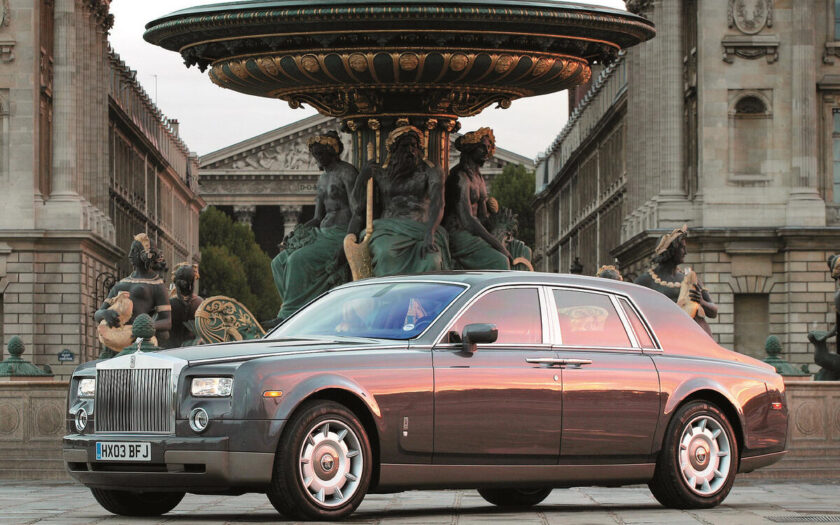
4th place is the Rolls-Royce Phantom, and yes, Chris Bangle even drew the Phantom. So now we know who to thank for such a wonderful example of classic design. This car was the first to be produced at the new BMW factory in Goodwood. Everyone immediately loved the classic design of this Rolls, and I want to express great respect to Bangle and everyone who worked on this car because it was quite modern for its time, but also preserved the classics of the original cars.
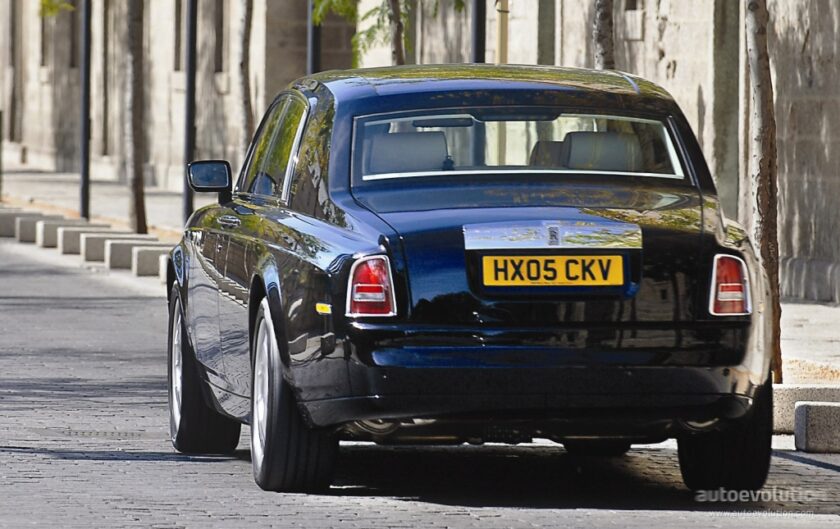
2003 Rolls-Royce Phantom specifications Power: 453 hp (338 kW) Acceleration: 0–100 km/h in ~5.9 seconds Top Speed: electronically limited to 240 km/h Engine: 6.75-liter naturally aspirated V12, co-developed with BMW Range: approx. 500–550 km (90 L tank, ~14–16 L/100 km consumption) Dimensions: length 5834 mm, width 1990 mm, height 1632 mm, wheelbase 3570 mm Technology: iDrive system (adapted from BMW), adaptive air suspension, 6-speed ZF automatic transmission, ABS, ESP, navigation, parking sensors Additional Features: rear-hinged “suicide doors,” umbrellas integrated in the doors, thick soundproof glass, fully hand-crafted interior, signature “Spirit of Ecstasy” retractable emblem
2-nd place: BMW Z3 1995
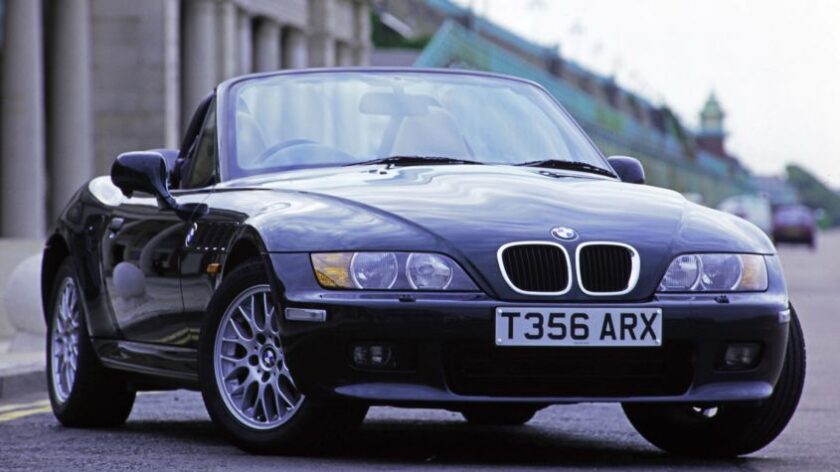
Regarding the second place, it should be added that this car was not drawn by Chris Bangle. The author of the BMW Z3 was Jody Nagashima, and Bangle led the project. The result? A very, very expressive yet classic design of the legend. Interestingly, the car was the first serial Z car, which was also one of the first cars to be assembled in the USA. In conclusion, the BMW Z3 became a legend of the 90s, which even managed to get into the film: “007: Goldeneye” (1995).
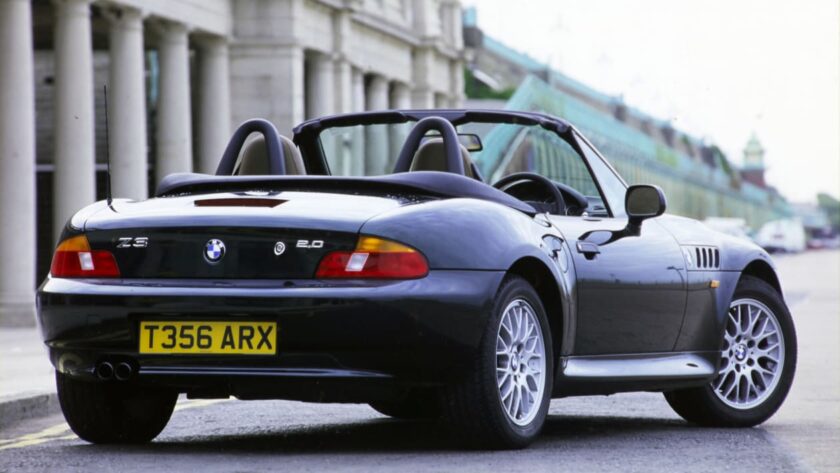
BMW Z3 (1995–1999) Specifications Type: Roadster / Convertible (first-generation Z3) Engine: 1.8i: 1.8L inline-4 petrol, 115 hp, 165 Nm 1.9i: 1.9L inline-4 petrol, 140 hp, 175 Nm 2.0i: 2.0L inline-6 petrol, 150 hp, 190 Nm 2.2i: 2.2L inline-6 petrol, 170 hp, 210 Nm 2.5i: 2.5L inline-6 petrol, 192 hp, 245 Nm 2.8i: 2.8L inline-6 petrol, 193–193 hp, 280 Nm 3.0i: 3.0L inline-6 petrol, 231 hp, 300 Nm M Roadster / M Coupe (1998–1999): 3.2L inline-6 petrol, 321 hp, 350 Nm
Transmission: 5- or 6-speed manual, 5-speed automatic; rear-wheel drive Performance (0–100 km/h): 1.8i: ~10.5 s 1.9i: ~8.7 s 2.2i: ~7.8 s 2.5i: ~6.8 s 2.8i: ~6.5 s 3.0i: ~6.0 s M Roadster / M Coupe: 5.0 s
Top speed: 1.8i: 200 km/h 2.2i: 215 km/h 2.5i: 230 km/h 3.0i: 250 km/h M Roadster / M Coupe: 250 km/h (electronically limited)
Dimensions & Weight: Length: 4,015 mm Width: 1,740 mm Height: 1,270 mm Wheelbase: 2,470 mmC urb weight: 1,200–1,400 kg
Features: Classic roadster styling with long bonnet and short rear deck Convertible soft-top with manual operation Rear-wheel drive for pure driving dynamics Optional sport package and leather interior Early iDrive not available; analog gauges
1-st place: Fiat Coupe (1993)
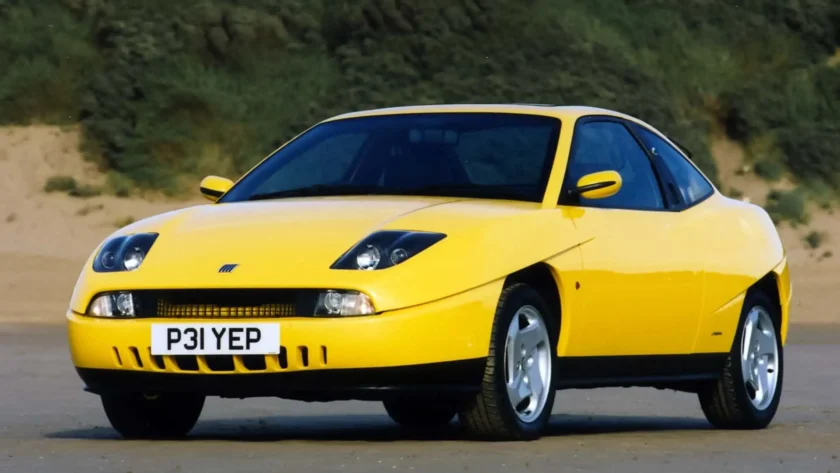
Well, the winner of our top is….. no, not BMW, it’s Fiat. As we already mentioned in the historical Intro in 1985, he moved to Fiat as a result of the Fiat Coupe, a unique car design, the interior of which was developed by Pininfarina. Chris Bangle in the Fiat Coupe embodied all his most daring ideas in a production car: characteristic lines above the wheel arches, air intakes on the lower bumper and much more. It is also interesting that the first versions of the Fiat Coupe had an engine from the Lancia Delta Integral.
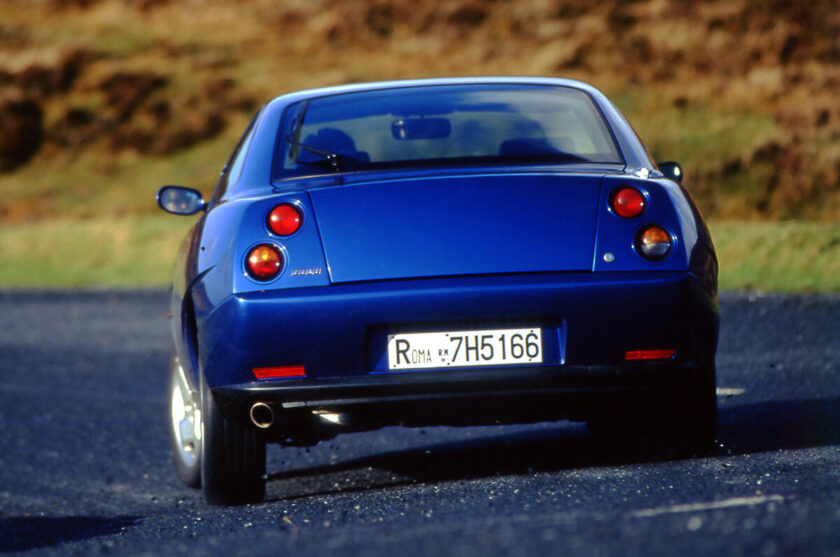
Fiat Coupe specifications Power: 160–220 hp (depending on version: 2.0 i.e., 2.0 16V, or 2.0 Turbo i.e.) Acceleration (0–100 km/h): 7.5–8.5 s Top Speed: 215–230 km/h Engine: Inline 4-cylinder petrol (2.0 i.e., 2.0 16V, later 2.0 Turbo i.e.), front-mounted Range: approx. 500–600 km (depending on 60 L fuel tank) Dimensions: 4180 mm (length) × 1760 mm (width) × 1340 mm (height), wheelbase 2510 mm Technologies: ABS, air conditioning, power steering, electric windows, sports suspension (in Turbo version) Additional Features: Pininfarina sporty design, integrated spoilers, alloy wheels, special Turbo and 16V trim
Top 5 concept cars from Chris Bangle:
5-th place: Opel Junior
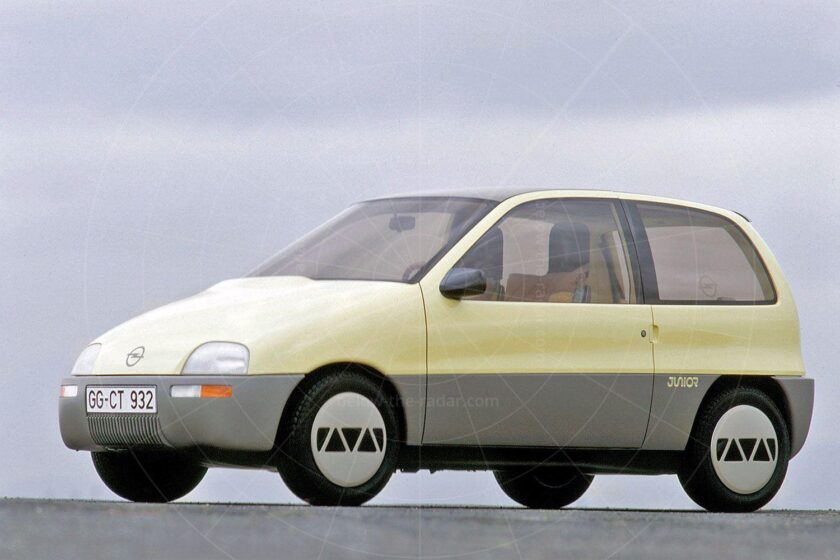
Our top is opened by Opel Junior. It can be considered one of the first masterpieces from Chris Bangle, since Opel was the first large company where Chris Bangle worked. Junior was very light, since its body was made of aluminum. Opel’s interior was surprising because it was not only modular, but also had a symmetrical design that made it cheaper (hello Citroen AMI ). It is also interesting that the possibility of an electric version was considered.
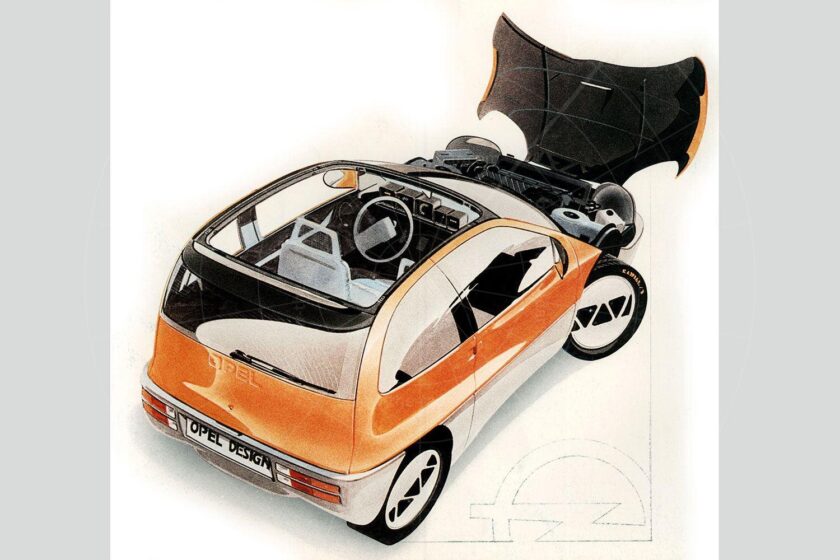
Opel Junior specificatons Power: 55 hp (from a 1.2 L petrol engine) Acceleration: not officially specified, but thanks to its light weight (650 kg), it was fairly nimble for a city car Top Speed: around 150 km/h Engine: 1.2 L inline-4 petrol engine Range: approx. 500 km (fuel consumption about 5 L/100 km) Dimensions:Length: 3.41 m Width: 1.53 m Height: 1.46 m Weight: 650 kg Technology: Modular dashboard (swappable panels for personalization) Lightweight construction with extensive use of plastics Digital instrument cluster (a futuristic touch for the early 80s)
Additional Features: Removable seats that could double as camping chairs Bright, playful design with customization options
4-th place: BMW xCoupe
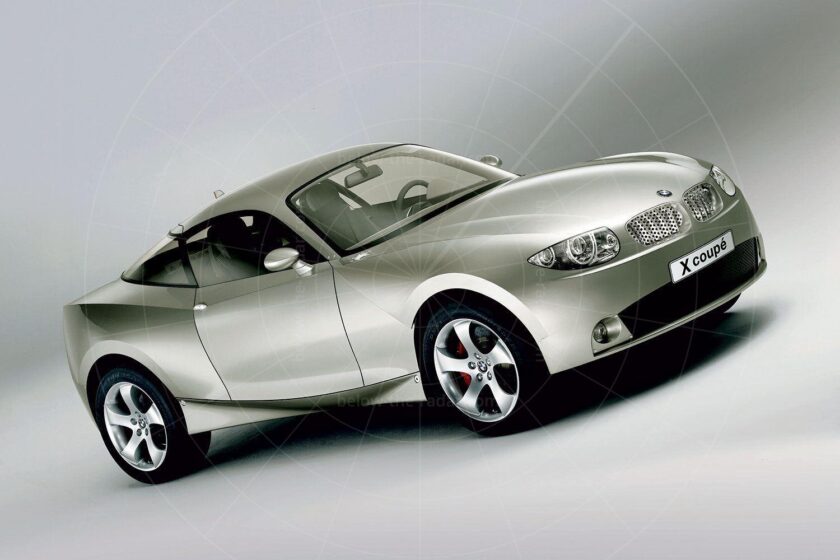
4th place is the BMW xCoupe, a unique concept car in its design. At first glance, the car looks crooked and illogical, but it turned out that way. Chris Bangle specifically made the design asymmetrical and illogical. Now, a single copy of the car is stored in a museum in Munich. You will never guess what this car was based on. I give you 3 seconds 1,2,3. No, you did not guess it’s the X5. Which once again emphasizes its illogicality.
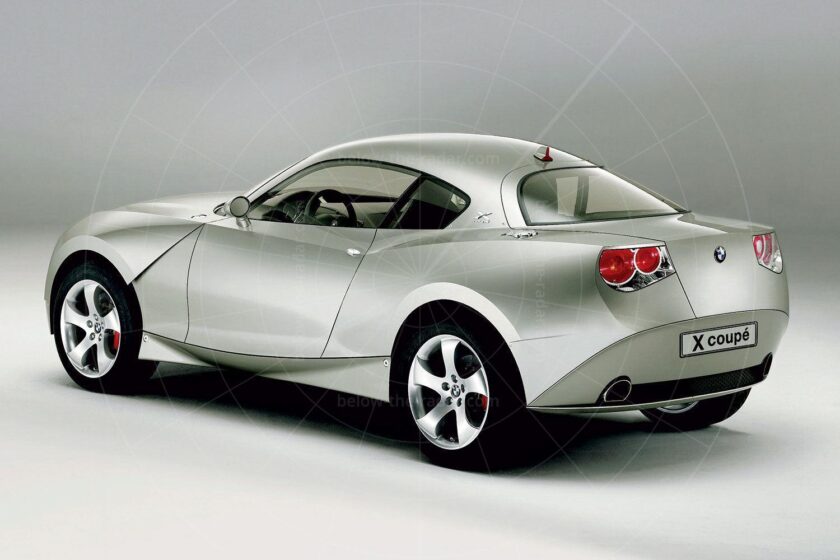
BMW X-Coupe Concept Specifications Power: 184 hp (137 kW) Acceleration (0–100 km/h): Not officially published (estimated around 8.5–9.0 seconds, based on engine performance and weight) Top Speed: Not officially published (estimated ~210 km/h / 130 mph) Engine: 3.0-liter inline-6 turbo diesel (from BMW X5 3.0d, E53) Common rail, direct injection Range: Not officially stated (with a ~90 L X5-type tank, estimated range ~900–1,000 km, thanks to diesel efficiency) Dimensions: Wheelbase: 2,820 mm (same as BMW X5 E53) Shorter, lower, and wider than the X5 (exact figures weren’t disclosed, but roughly 200 mm shorter) Body: 2-door coupe-SUV style Technology: All-wheel drive system (xDrive-style, borrowed from X5) Asymmetric exterior design (left and right sides intentionally different) Aluminum body panels "Flame surfacing" design language (first time used on a BMW) Additional Features: Futuristic minimalist interior with red leather and brushed aluminum Asymmetrical dashboard design Concept-only features like unusual coupe tailgate and exaggerated wheel arches Designed purely as a design study – never intended for production
3-rd place: BMW z9 Gran Turismo
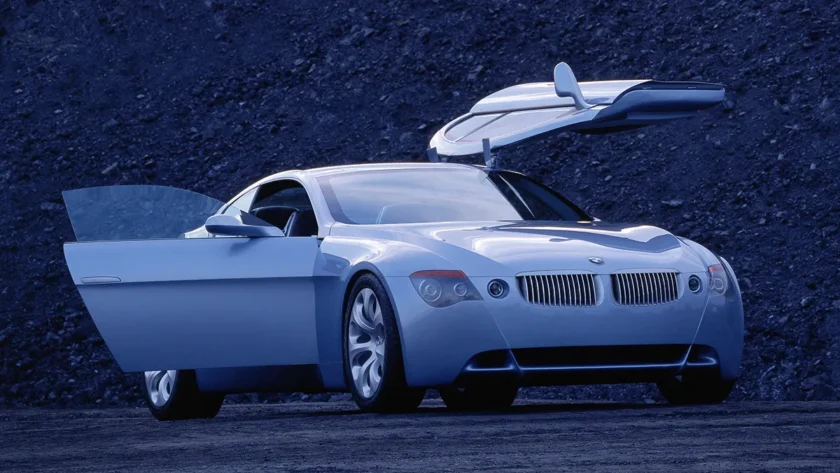
The middle of the top is another unique car – BMW Z9 Gran Turismo. The design of the car is very ambiguous but beautiful, even though many design elements were later used by Bengal in his subsequent efforts. Interestingly, the doors could be opened both in the guise of a hatchback and in the classic way, which is quite comfortable. And the most surprising thing is that the engine here is a diesel V8, which was non-standard for a 2-door coupe.
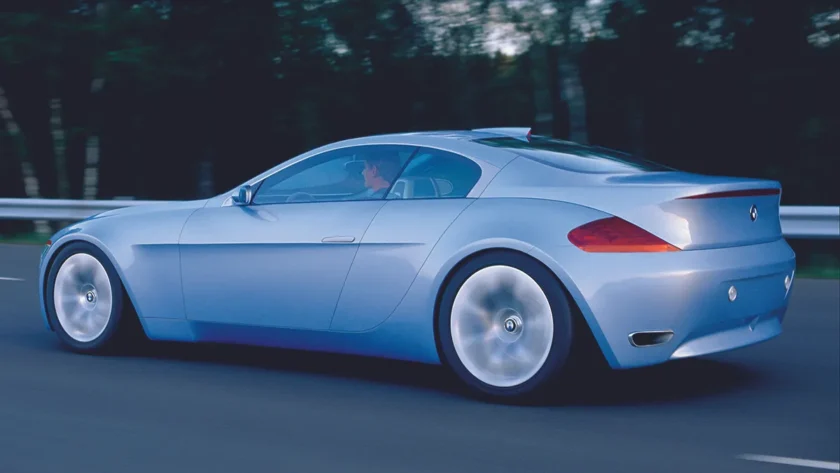
BMW Z9 Gran Turismo specifications Power: 245 hp (3.9-liter V8 turbo diesel M67) 0–100 km/h Acceleration: approximately 5 seconds Top Speed: around 251 km/h Engine: 3.9-liter V8 turbo diesel with direct injection, 559 Nm of torque Range: not specified (concept car, not a production model) Dimensions: length 5000 mm, width 2000 mm, wheelbase 3100 mm Technology: multifunction central controller, 8.8-inch touch panel, precursor to the iDrive system Additional Features: gullwing doors, aluminum frame with carbon fiber body panels, front tires 20 inches, rear tires 21 inches, 5-speed Steptronic automatic transmission with manual control option
2-nd place: BMW CS1
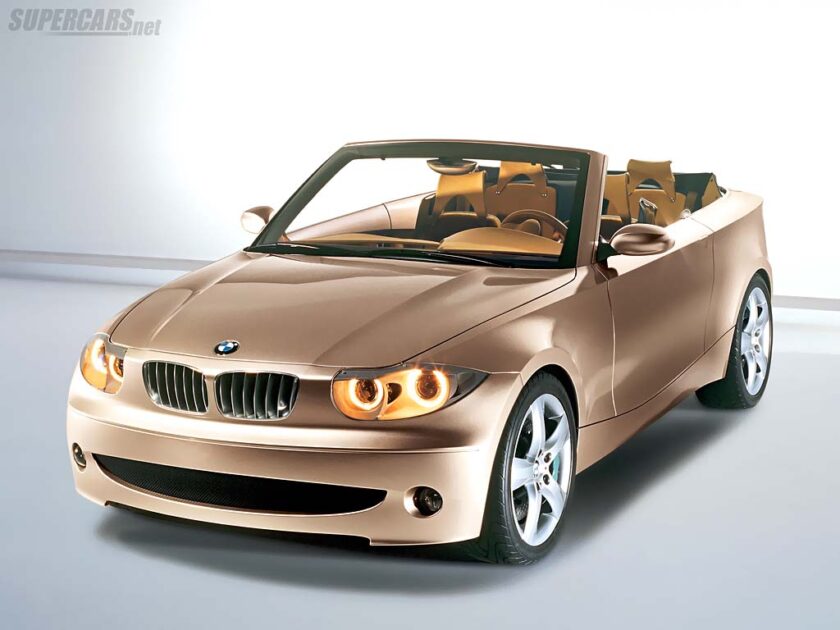
2nd place is the concept of the first series of BMW, or rather the BMW CS1. Again, a unique concept from Chris Bangle. At the time of the concept, BMW experimented with aluminum in the body, so looking at the light material and unpretentious body shapes, it weighs up to 100 kg. Also, even though it was a concept of a city car, it had Harman Kardon acoustics, but minimalism in the interior and materials that foresaw the future.
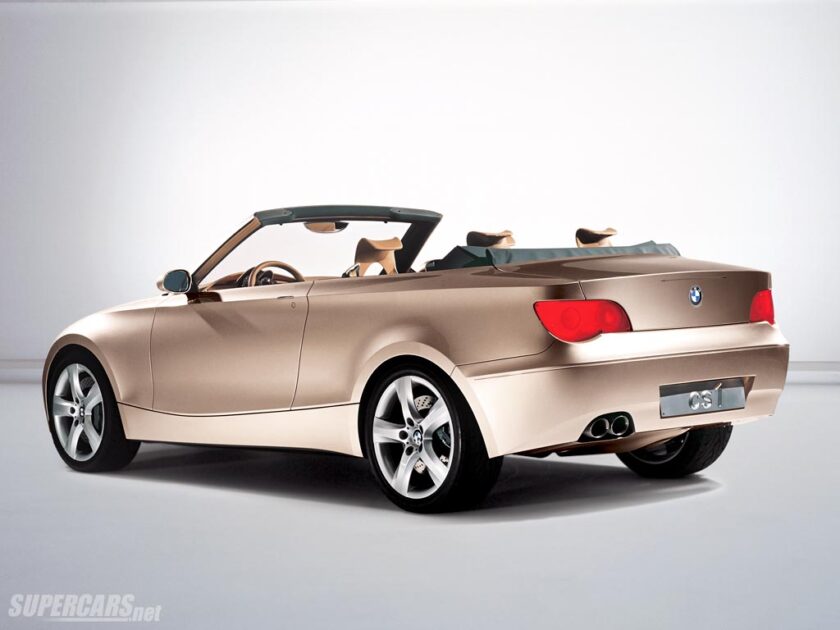
BMW CS1 Specifications Power: compact inline four engine designed for sporty performance Acceleration: nimble and responsive handling emphasizing driver engagement Top Speed: balanced for city and highway driving without extreme focus Engine: front mounted petrol engine with manual transmission for true driving feel Range: suitable for daily use and short trips with efficient fuel consumption Dimensions: compact hatchback proportions optimized for agility and maneuverability Technology: early iDrive style interface with driver oriented cockpit and integrated controls Additional Features: lightweight body panels for agility soft folding roof sport seats premium interior trim
1-st: BMW GINA
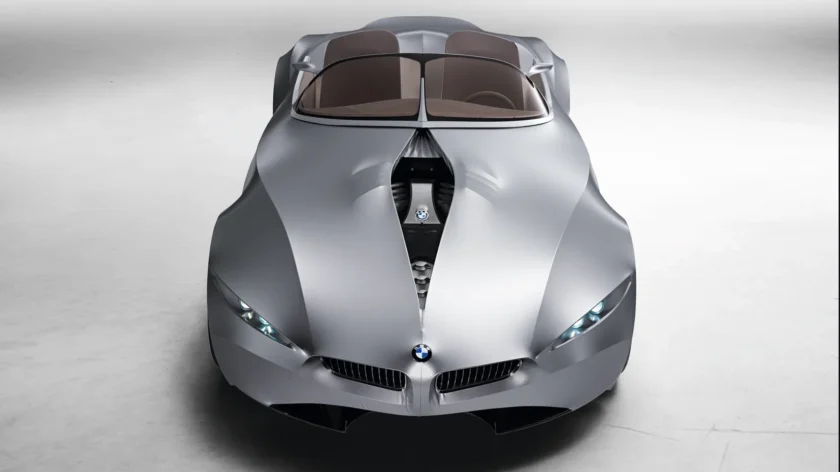
Well, we end with a car that became one of the last BMW cars that Chris Bangle drew. BMW GINA is the most futuristic BMW concept that was able to change the shape of its body. GINA is the most outrageous concept from today’s top. It seems that changing the shape of the body is an unnecessary feature, a demonstration of capabilities, but it’s not so simple; the fiber body can adapt to air flows, which makes the concept super aerodynamic.
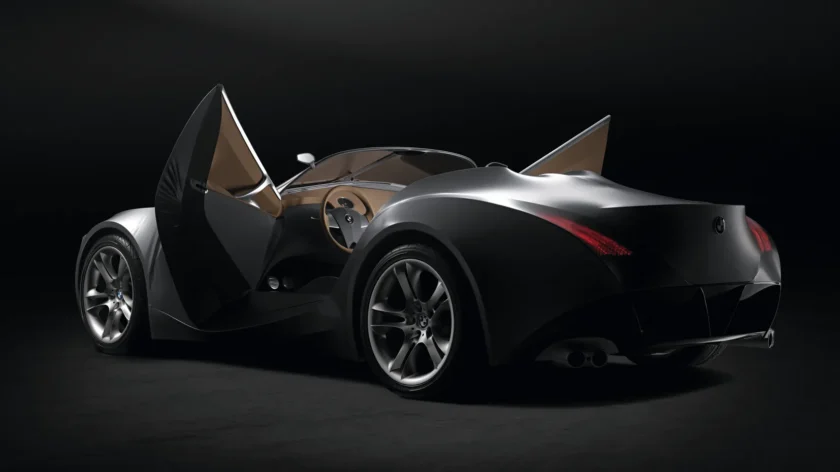
BMW GINA specifications Power: around 300–350 hp, based on the 6 Series platform Acceleration: 0–100 km/h approximately 5.5–6 seconds Top speed: about 250 km/h, electronically limited Engine: 3.0–4.0 L inline or V6 petrol Range: conceptually around 500 km on a standard BMW fuel tank Dimensions: roughly 4.7 m long, 1.9 m wide, 1.3 m high Technologies: flexible fabric body on a movable frame, hidden headlights, adaptive trunk, and minimalist interior with integrated touch panels Additional features: adaptive aerodynamics, transformable body for improved access or airflow, lightweight construction using aluminum and composite materials
Conclusion:
Today, I think we have examined in detail the work of the great and unique automotive designer Chris Bangle. Who gave the world a lot of unique and underrated cars that the world sometimes needed years to love.
Chris Bangle’s official website: